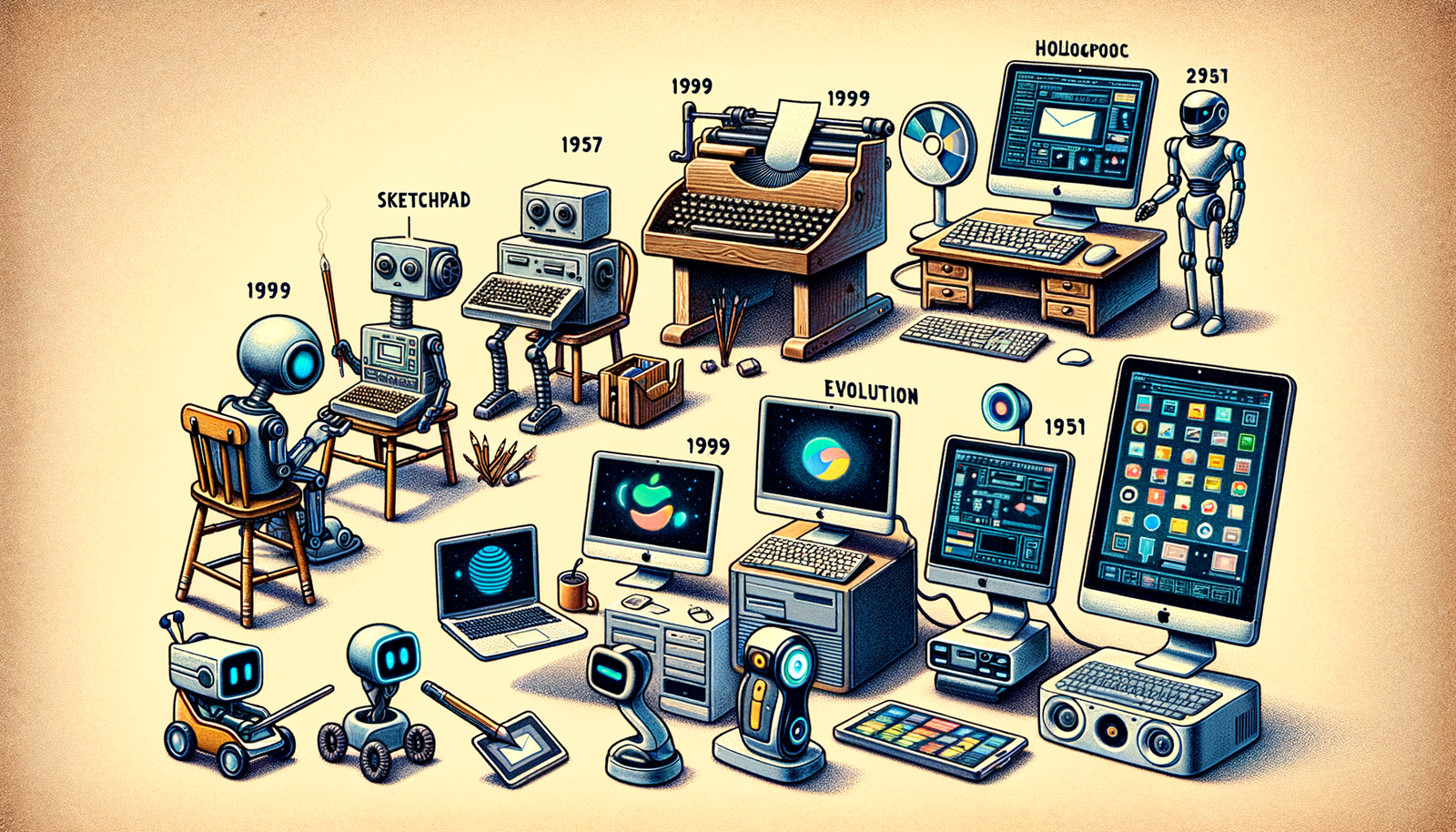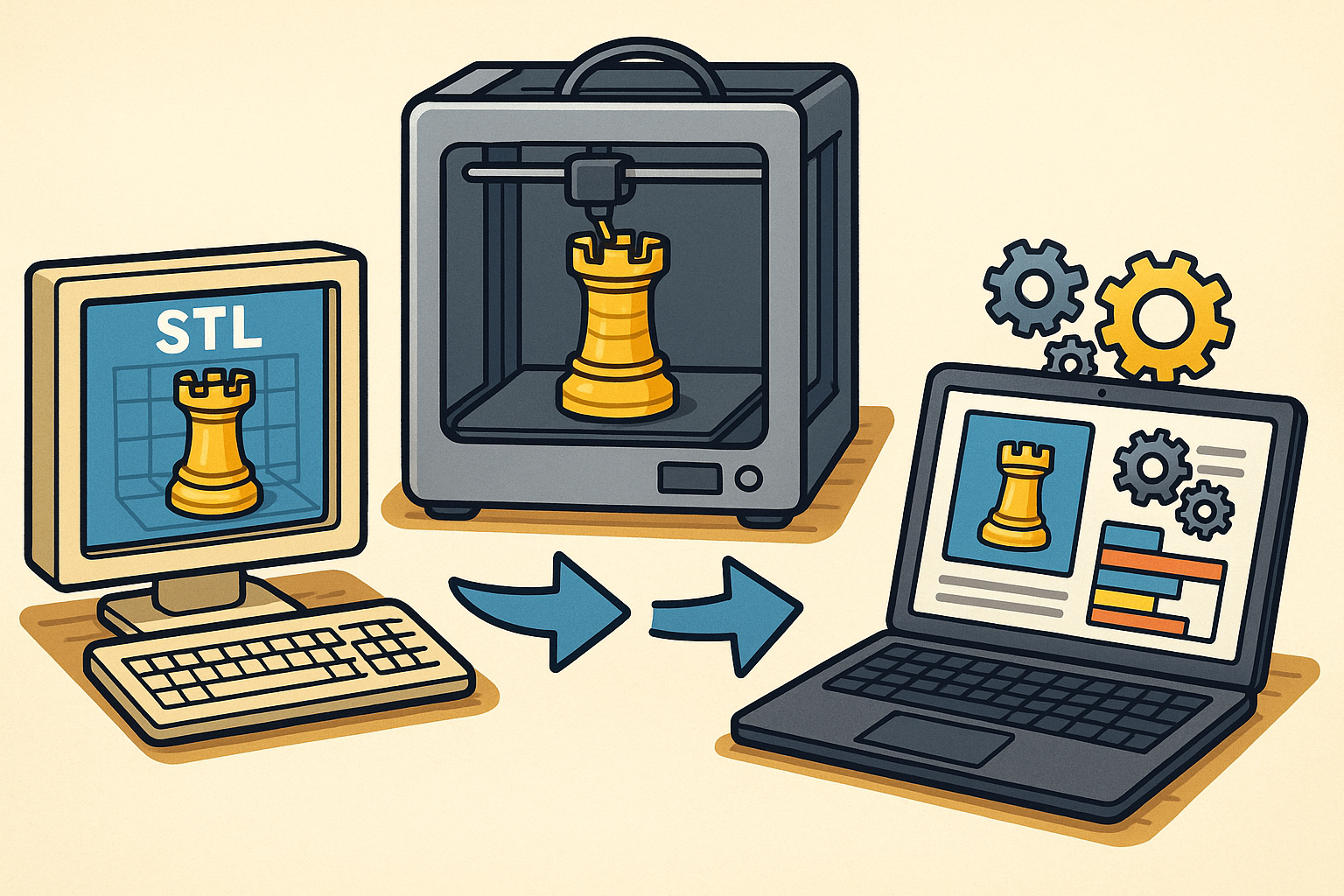Your Cart is Empty
Customer Testimonials
-
"Great customer service. The folks at Novedge were super helpful in navigating a somewhat complicated order including software upgrades and serial numbers in various stages of inactivity. They were friendly and helpful throughout the process.."
Ruben Ruckmark
"Quick & very helpful. We have been using Novedge for years and are very happy with their quick service when we need to make a purchase and excellent support resolving any issues."
Will Woodson
"Scott is the best. He reminds me about subscriptions dates, guides me in the correct direction for updates. He always responds promptly to me. He is literally the reason I continue to work with Novedge and will do so in the future."
Edward Mchugh
"Calvin Lok is “the man”. After my purchase of Sketchup 2021, he called me and provided step-by-step instructions to ease me through difficulties I was having with the setup of my new software."
Mike Borzage
Design Software History: Evolution of Design Software: From Sketchpad to AI-Driven Tools and Beyond
August 28, 2024 5 min read


Introduction to the Evolution of Design Software
The history of design software is a fascinating journey from primitive sketches on paper to sophisticated, intelligent platforms that empower modern engineering and architecture. This evolution has been marked by significant technological advancements and innovations that have revolutionized the way we design and create. From the early days of computer-aided design (CAD) systems to the latest in AI-driven tools, the story of design software is one of continual transformation and progress.
Design software has become indispensable in various fields due to its ability to streamline complex design processes, increase accuracy, and enhance creativity. In engineering, it facilitates precise modeling and simulation, while in architecture, it enables the visualization of intricate structures and environments. The impact of design software on product design, aerospace, automotive industries, and even art and fashion highlights its broad applicability and importance in modern society.
Early Beginnings: From Sketchpad to Early CAD Systems
Ivan Sutherland and Sketchpad
The journey of design software began with Ivan Sutherland's groundbreaking invention, Sketchpad, in the early 1960s. Sutherland, often regarded as the "father of computer graphics," developed Sketchpad as part of his Ph.D. thesis at MIT. The software was revolutionary as it allowed users to interact with a computer graphically, using a light pen to draw directly on a CRT monitor. This was a significant departure from the punch cards and text-based interfaces prevalent at the time.
Sketchpad's impact on later developments in design software cannot be overstated. It introduced key concepts such as object-oriented programming and the use of graphical interfaces, which became foundational elements in future CAD systems. The ability to manipulate and modify graphical objects dynamically laid the groundwork for more advanced design and modeling tools that would emerge in the following decades.
Early CAD Systems
The 1970s and 1980s saw the commercialization of CAD systems, which brought these powerful tools to a broader audience. Companies like IBM, CADAM, and Computervision were at the forefront of this revolution, developing software that enabled engineers and designers to create detailed technical drawings and models more efficiently than ever before.
- IBM: IBM's CAD system was one of the first to be widely adopted in various industries, providing a robust platform for 2D drafting and design.
- CADAM: Initially developed by Lockheed for internal use, CADAM (Computer Augmented Design and Manufacturing) became a popular commercial product known for its ease of use and powerful drafting capabilities.
- Computervision: As a pioneer in interactive graphics, Computervision introduced systems that allowed for real-time manipulation of 3D models, paving the way for more complex and integrated design workflows.
Key Technological Advancements and Milestones
Transition from 2D Drafting to 3D Modeling
The transition from 2D drafting to 3D modeling marked a significant technological leap in the world of design software. This shift was driven by advancements in computer hardware and software capabilities, enabling more complex and detailed representations of objects. One of the pivotal software in this transition was AutoCAD, developed by Autodesk in 1982. AutoCAD's introduction of 3D modeling capabilities allowed engineers and designers to create more accurate and realistic models, enhancing the design process considerably.
Solid Modeling and Parametric Design
The development of solid modeling and parametric design further revolutionized the capabilities of design software. Solid modeling techniques allowed for the creation of three-dimensional objects with defined volume and mass properties, crucial for accurate engineering analysis and manufacturing. Parametric design introduced the concept of using parameters and constraints to define object geometry, enabling more flexible and efficient design modifications.
Key contributions in this area came from software like PTC’s Pro/ENGINEER and SolidWorks. Pro/ENGINEER, introduced in the late 1980s, was one of the first to implement parametric modeling, allowing designers to easily alter dimensions and relationships within a model. SolidWorks, launched in 1995, brought these powerful tools to a broader market with its user-friendly interface and robust feature set.
Integration of Simulation and Analysis Tools
The incorporation of simulation and analysis tools into design software represented another significant milestone. These tools enabled engineers to perform detailed analyses, such as finite element analysis (FEA) and computational fluid dynamics (CFD), directly within the design environment. This integration allowed for the validation and optimization of designs early in the development process, reducing the need for physical prototypes and accelerating time-to-market.
Pioneering software in this domain includes ANSYS, which provided comprehensive simulation capabilities that could be integrated with various CAD platforms. ANSYS's ability to perform complex analyses, such as structural, thermal, and fluid dynamics simulations, made it an essential tool for engineers across multiple industries.
Modern Trends and Future Directions
Impact of AI and Machine Learning on Design Software
The advent of artificial intelligence (AI) and machine learning has brought a new dimension to design software. These technologies enable the development of intelligent design tools that can automate routine tasks, optimize designs, and provide data-driven insights. AI-driven design software can analyze vast amounts of data to identify patterns and suggest improvements, enhancing the efficiency and creativity of the design process.
Examples of AI-driven design software currently in use include Autodesk’s Generative Design tools, which leverage machine learning algorithms to explore a wide range of design alternatives based on specified constraints and goals. This approach allows for the creation of innovative and optimized designs that may not be achievable through traditional methods.
Cloud Computing and Collaborative Design Platforms
Cloud computing has transformed the landscape of design software by enabling collaborative design platforms that facilitate real-time collaboration among distributed teams. These platforms allow multiple users to work on the same design concurrently, streamlining the design process and improving communication and productivity.
- Onshape: Onshape is a cloud-based CAD platform that offers real-time collaboration and version control, making it easier for teams to work together seamlessly.
- Fusion 360: Autodesk’s Fusion 360 combines CAD, CAM, and CAE tools in a single cloud-based platform, providing a comprehensive solution for collaborative product development.
Additive Manufacturing and Generative Design
Additive manufacturing, also known as 3D printing, has become increasingly integrated with design software, enabling the direct fabrication of complex geometries and customized parts. This integration allows designers to transition from digital models to physical objects more efficiently and accurately.
Generative design is another trend that is reshaping the design landscape. By leveraging AI and advanced algorithms, generative design tools can automatically generate multiple design alternatives based on specified constraints and objectives. This approach leads to innovative and optimized designs that can be directly manufactured using additive techniques.
Future Prospects: Quantum Computing and Beyond
Looking ahead, emerging technologies like quantum computing hold the potential to revolutionize design software further. Quantum computing's ability to perform complex calculations at unprecedented speeds could unlock new possibilities for simulation, optimization, and problem-solving in design.
While the full impact of quantum computing on design software remains speculative, its potential to accelerate innovation and solve previously intractable problems is undeniable. As technology continues to evolve, the landscape of design software will undoubtedly transform, offering new tools and capabilities that will shape the future of engineering, architecture, and beyond.
The journey of design software, from its early beginnings to the modern era, is a testament to the power of innovation and the relentless pursuit of progress. As we continue to push the boundaries of what is possible, the tools we use to design and create will evolve, enabling us to achieve greater heights and realize our most ambitious visions.
Also in Design News

Design Software History: From STL to Manufacturing OS: The Evolution of Additive Manufacturing Software
December 21, 2025 14 min read
Read More
Heat-Treatment and HIP Simulation in CAD/PLM: Turning Post-Processing into a Design Variable
December 21, 2025 12 min read
Read More
Cinema 4D Tip: Cinema 4D: Export Multi‑Layer OpenEXR for AOV‑Driven ACES/OCIO Compositing
December 21, 2025 2 min read
Read MoreSubscribe
Sign up to get the latest on sales, new releases and more …


